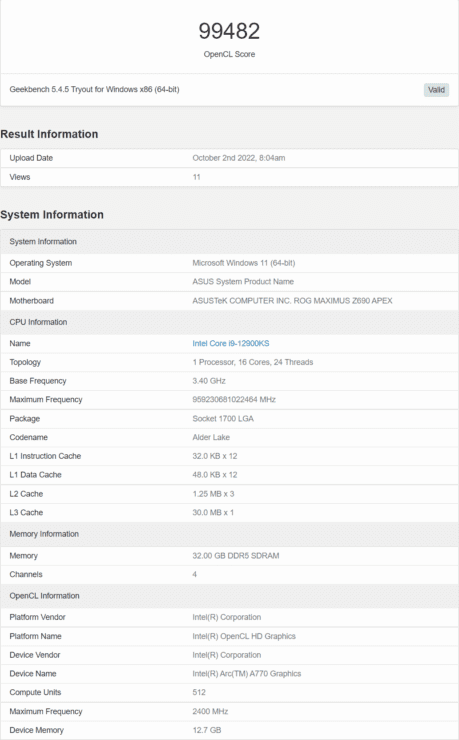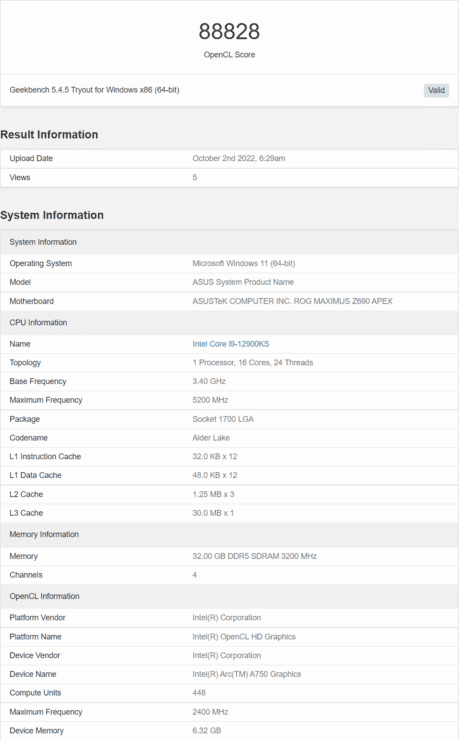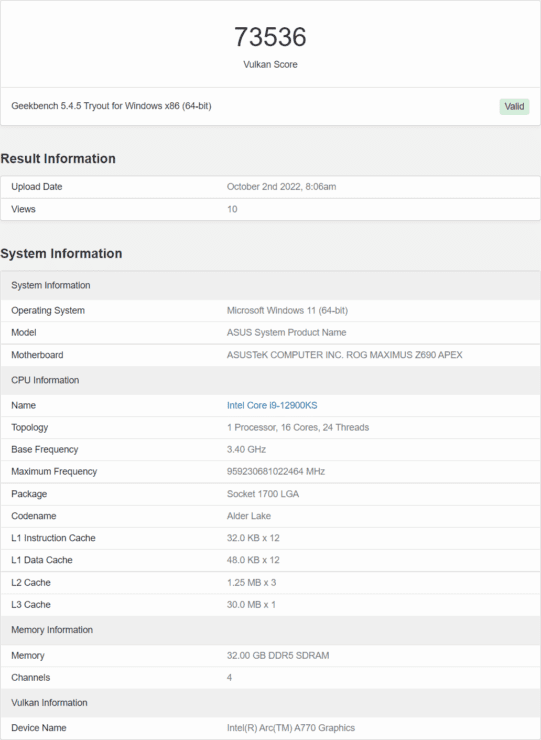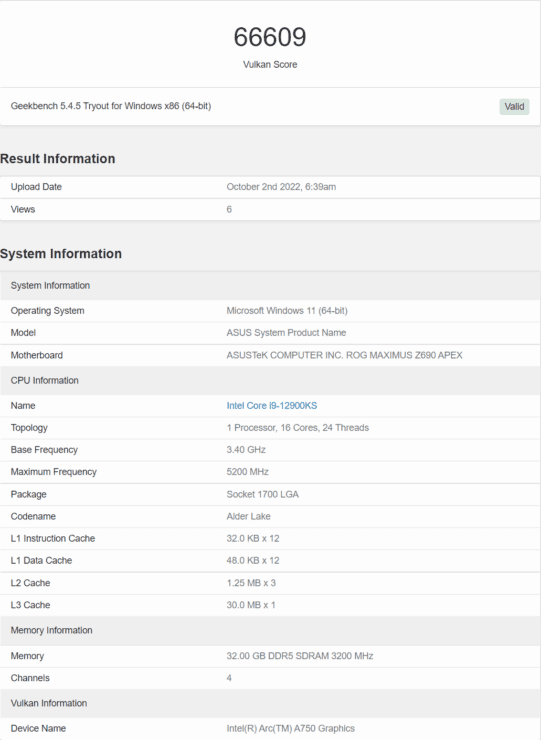Once again benchmarked in OpenCL & Vulkan APIs, Intel’s Arc A770 & Arc A750 graphics cards exhibit a substantial improvement. We can confirm that the benchmarks within Geekbench are the final retail versions and not the numerous engineering samples that we have previously seen.
Multiple benchmarks for the Intel Arc A770 & Arc A750 cards have been released in the Geekbench 5 database, as discovered by Benchleaks. These are probably the Limited Edition variations since those have already been distributed to reviewers for evaluation. On a computer with an Intel Core i9-12900KS processor, an ASUS ROG Maximus Z690 APEX motherboard, and 32 GB DDR5-6400 memory, all benchmarks were run.
In the OpenCL test, the Intel Arc A770 outperformed the Arc A750 with a score of 99482 compared to 88828. This is a performance gain of between 15-20% compared to the prior results for the Intel Arc A770, which only a few months ago was scoring between 80 and 85K points in the same benchmark. Regarding the opposition, the Arc A770 is now 3% faster than the GeForce RTX 3060 and quite close to the AMD Radeon RX 6700 XT. The Arc A750 outperforms the Radeon RX 6600 XT by about 8%.

On the Vulkan front, the Intel Arc A770 achieves a score of 73636 while the Arc A750 achieves a score of 66609.
This is 5% quicker than the Radeon 6700 XT and comparable to the GeForce RTX 3060. Around 3-4% more quickly than the Arc A750. We must keep in mind that there is still plenty to be done to improve.

As previously indicated by Intel, they would concentrate on OpenCL in future driver releases after fine-tuning current-gen APIs like DX12 and Vulkan. The fact that Intel has reduced the gap with the competition is encouraging, and considering the costs and value of the bundles, they might very well be justified.
AMD’s Radeon RX 6700 XT is currently available for $379 US, while the Arc A770 with 16 GB is $349 US, and the 8 GB model costs even less at $329 US. With the Arc A750, it decreases to $289 US, making it quite comparable with the RX 6650 XT, which costs $299 US. Given that NVIDIA and AMD will first concentrate their next-generation GPUs on the high-end segment, current-generation mainstream cards will remain on the market for some time until early next year, Intel’s decision to focus on this market segment as its primary target appears to be a prudent one.

The flagship Arc A770 from Intel’s Arc Alchemist family will have a 256-bit bus interface, 32 Xe-Cores, and the complete ACM-G10 GPU. The Intel Arc A770 will include 256-bit bus interfaces, 16GB and 8GB memory options, and a 225W TDP. The graphics card will have clock speeds of 2.1 GHz for the GPU and 17.5 Gbps for the GDDR6 memory, providing up to 560 GB/s of bandwidth.

It is anticipated to be comparable to the RTX 3060 in terms of performance but to perform a little better. Several Arc A770 benchmarks may be found here and here. The graphics card will start at $329 US for the 8 GB version, and will cost $349 US for the Limited Edition model with 16 GB of memory. This is a fairly minor premium for doubling the memory limit. Compared to the NVIDIA RTX 3060, the graphics card is supposed to provide up to 42% more performance for every dollar spent (overclocked variant).
The second component is the Intel Arc A750, which will have an ACM-G10 GPU and the same TDP target of 225W as the Arc A770 but with 28 Xe Cores (3584 ALUs), 28 ray tracing units, and 8 GB of GDDR6 memory. The card will include a 2050 MHz GPU and a 16 Gbps memory clock rate for a total bandwidth of 512 GB/s.
Also Read:








